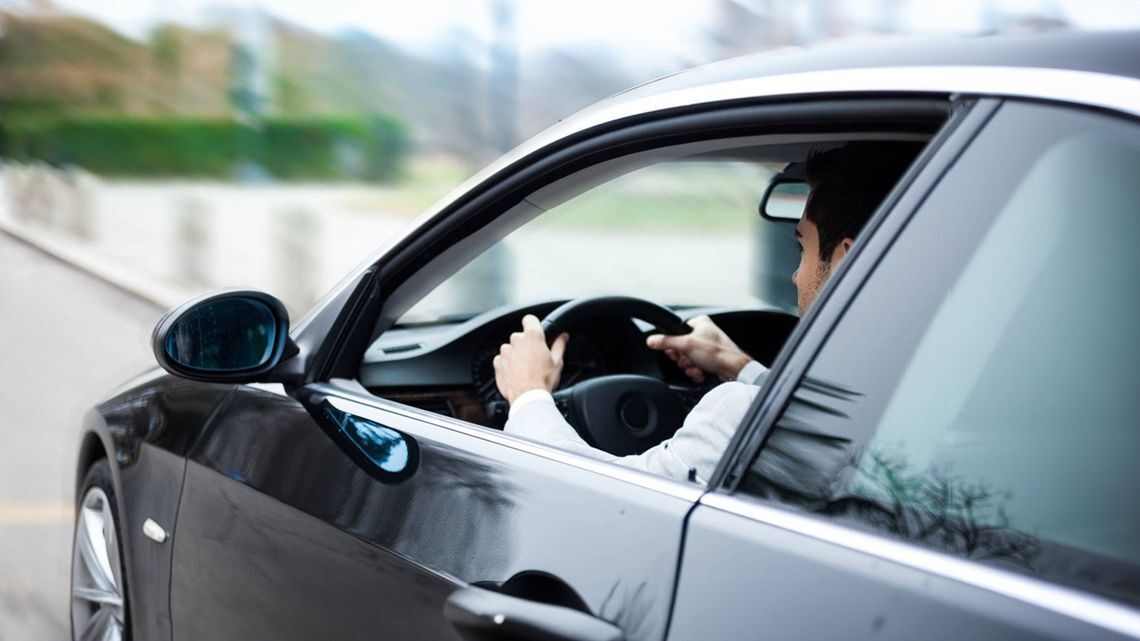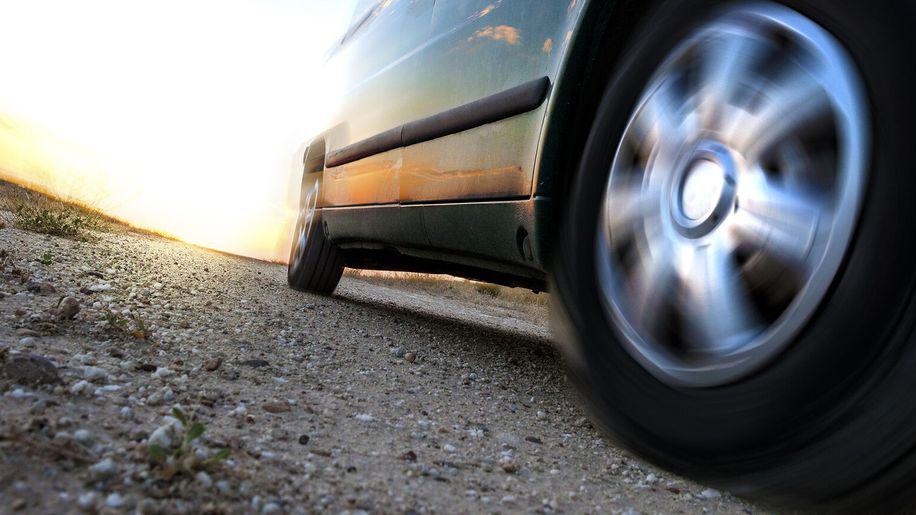What is eco-driving?
The “eco” of eco-driving stands for two principles:
Firstly, ecology: driving with the environment in mind is increasingly important for consumers these days.
Secondly, economical: saving fuel has a positive effect on a driver’s wallet. Eco-driving, or “green driving”, is thereby an ensemble of driving techniques that aim to reduce emissions and the use of fossil fuels as much as possible. And if you drive an electric vehicle, it will also help you increase the battery range!
What driving techniques can help save fuel?
Here are 9 Eco-driving tips to reduce your carbon footprint and save money.
1. Check your tyre pressure
Under-inflated tyres increase fuel consumption, in addition to impacting the driver's control of the vehicle. On the other hand, over-inflated tyres reduce fuel consumption but increase braking distances and reduce tyre life. Indication of appropriate pressure levels can usually be found in the vehicle's maintenance manual, the glove box, on the door, or the fuel door.
2. Choose the right tyre
“Fuel efficient tyres” designed to generate low rolling resistance can also significantly reduce your car’s fuel consumption. A labelling system can help you identify the most efficient tyre: look for the “gas pump” pictogram on the label and choose tyres with an A rating.
THE LABEL DISPLAYS THE TYRE FUEL EFFICIENCY, RATED FROM A TO E (A BEING MOST EFFICIENT)
3. Anticipate: slow down, don’t brake
For example, avoid racing up to traffic lights and hitting the brakes. Instead, plan ahead and allow enough distance to let the car gently decelerate in time.
4. Avoid jolted driving
Not always easy in built-up urban areas, but constant stopping and starting will take its toll on your fuel consumption. One of the ways to how to get better gas mileage (miles per gallon) when city-driving is to relax! You don’t need to be constantly bumper-to-bumper with the car in front. Luckily, these days many vehicles are equipped with urban driving modes designed to reduce fuel consumption.

5. Avoid sudden accelerations
The faster you change an object’s velocity, the more force it takes. A sudden increase in speed will therefore require an extra dose of energy, and therefore tax your fuel supply.
6. Stick to speed limits
Not just imposed for safety reasons, car speed limits help reduce fuel consumption and pollutant emissions.
7. Read the terrain
Cruising in gear can be a great way to get better mpg. If you’re approaching a decline, for example, let your car cruise and gravity do its job. If there’s an incline just after, start accelerating as you reach the bottom of the slope. What about cruise control? While useful for the motorway, it’s best to turn it off on hilly terrain.
8. Don’t leave the engine running
For both your wallet and the environment, avoid leaving the car running if not necessary. This includes stopping to make a phone call, waiting in the car to pick up the kids, even sitting in heavy traffic.
9. Use air conditioning sparingly
Unnecessary use means more fuel consumed and more CO₂ in the atmosphere. At low speed, prefer ventilation or lower the windows.
Green driving: expert tips to help you save fuel
Cyrille Roget, Technical and Scientific Communications Director for Michelin, has some specific examples of how to save fuel with eco-driving techniques.
He explains, “Accelerate gently, making use of the car’s power for example when starting up.” There’s no need to roar off as fast as possible. Likewise, when it comes to speed: “Respect speed limits on the motorway to save fuel. Don’t necessarily accelerate uphill, you can always let the car slow a little on inclines.”
In urban areas, Cyrille says, “the temptation is to stay close behind the person in front. In certain cities, people can develop a jumpy driving style. But the key is to stick to your own rhythm, and to anticipate as much as possible.”

And one of the most important factors when it comes to saving fuel and getting the most out of your miles per gallon (mpg)? Tyres! Cyrille explains that a lot of the “wasted” energy (fuel that isn’t used to turn the wheels of the car) is lost due to rolling resistance: “This loss represents up to 20%, in other words one full tank in five. And when you consider how much fuel we put in a car every year, you understand it’s a significant amount.”
The solution to reducing rolling resistance (without losing traction) is in the right tyres. Take the new MICHELIN e·PRIMACY tyres, for example. Specifically designed with all the aspects of eco-driving in mind, they help drivers save fuel and money due to exceptionally low rolling resistance(1).
With the best rolling resistance vs. the average premium competitors(1), MICHELIN e·PRIMACY offers 0.21 litres of fuel per 100 kilometres and around €80 over the life of the tyre(2,3). For an electric vehicle, range is increased by an estimated 7% compared to other tyres of its category – that’s 30km, for an estimated 400km range(4).
How can drivers help the environment?
The automotive industry is making significant steps towards improving vehicles’ impact on the environment through innovations such as the MICHELIN e·PRIMACY tyre or the MICHELIN PILOT SPORT EV tyre. But the driver also has a significant role to play. As we’ve seen, eco-driving is not only a way to save fuel, money and stay safer on the road, but the mindset of green driving is also fundamental if we are, together, rolling towards a greener future.
Photo credits
Halbergman / Getty
Zero Creatives / Getty
Karin & Uwe Annas / Adobe Stock
Kiyoshi Hijiki / Getty
Legal mentions
(1) MICHELIN e.Primacy category of tyres is defined as one of the Premium summer tyres such as CONTINENTAL, GOODYEAR,BRIDGESTONE, PIRELLI, DUNLOP brands, and which are not dedicated to Original Equipment application (i.e not designed to achieve car manufacturers specific targets) but tyres that can be purchased from retailers.
Rolling Resistance test - Rolling Resistance tests conducted on machine by Applus Idiada, on Michelin's request, June (on new) & August (on 2mm buffed) 2020, on dimension 205/55 R16 91V, comparing MICHELIN e.PRIMACY (new: 5.58kg/t & worn: 5.13kg/t) versus MICHELIN PRIMACY 4 (new: 7.74kg/t & worn: 6.25kg/t) ; BRIDGESTONE TURANZA T005 (new: 7.17kg/t & worn: 5.81kg/t) ; CONTINENTAL ECOCONTACT 6 (new: 6.39kg/t & worn: 5.49kg/t) ; CONTINENTAL PREMIUM CONTACT 6 (new: 8,93kg/t & worn: 6,94kg/t) ; DUNLOP BLURESPONSE (new: 7.97kg/t & worn: 5.54kg/t) ; GOODYEAR EFFICIENT GRIP 2 (new: 7.01kg/t & worn: 5.38kg/t) ; PIRELLI CINTURATO P7 BLUE (new: 6.96kg/t & worn: 6.30kg/t) ; PIRELLI CINTURATO P7 (new: 8.79kg/t & worn: 6.97kg/t).
(2) When new, MICHELIN e·Primacy generates 2kg/t on average Rolling Resistance less than competitors, equivalent in fuel consumption reduction of up to 0,21l/100km, equivalent of a gain in C02 emission up to 5g for a VW Golf 7 1.5 TSI or equivalent of gain of up to 7% in autonomy for a VW e.Golf.
During usage, MICHELIN e·Primacy generates 1,5kg/t on average Rolling Resistance less than competitors, gain is equivalent of up to 80€ savings on fuel. This gain is equivalent of up to 174kg of C02 saved. Usage gains are estimated on the average of new and buffed 2mm data to take into account real life time performance -All gains are estimated on a base of 35 000km and a fuel price of 1.46€/L (https://ec.europa.eu/energy/data-analysis/weekly-oil-bulletin_en 6/1/2020 weighted on the top 10 countries for motor vehicle movements on national and foreign territory - https://ec.europa.eu/ eurostat/web/transport/data/database). Actual fuel and cost savings may vary depending notably on driving habits, vehicle or tire pressure
(3) Increased EV battery range and CO2 reduction. When new, MICHELIN e.PRIMACY generates 2kg/t on average Rolling Resistance less than competitors, equivalent in fuel consumption reduction of up to 0.21l/100km, equivalent of a gain in CO2 emission up to 5g for a VW Golf 7 1.5 TSI or equivalent of gain of up to 7% in autonomy for a VW e.Golf.


